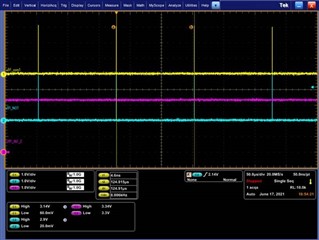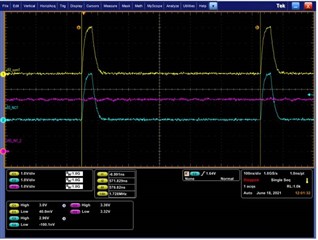Other Parts Discussed in Thread: TMUX1574, SN74CB3Q3257
Hi expert,
Customer's system failed communication through TS3A44159. They have tried to bypass it using reserved 0ohm (R1053/R1051/R1039/R1030) and it's ok.
Could you please advise what might goes wrong and also help clarify below questions?
Schematic:

Bypass MUX

Bypass MUX(zoom in)
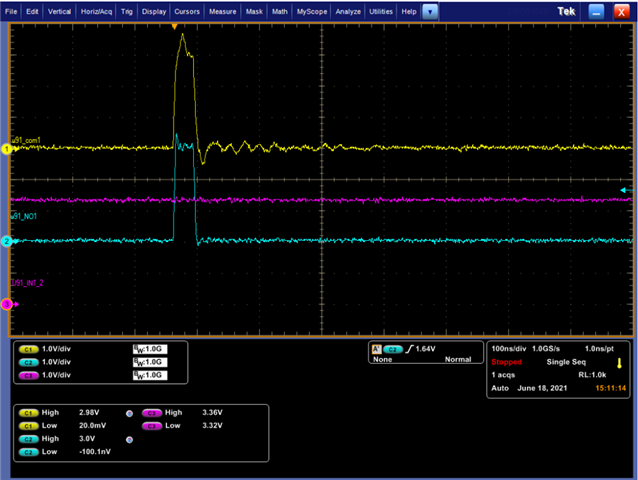
With MUX
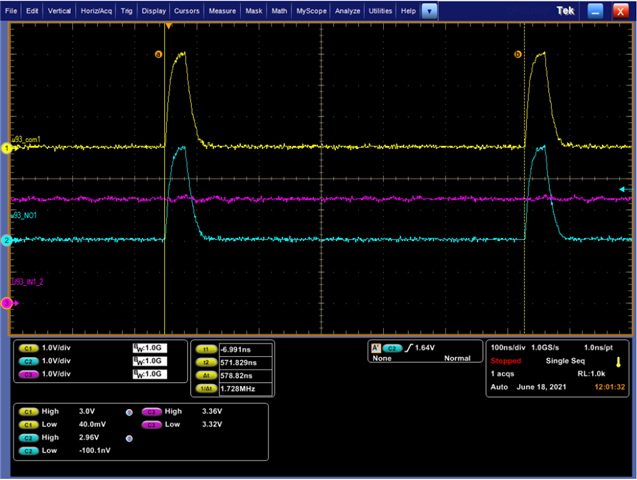
We are wondering maybe we violate dynamic timing spec.
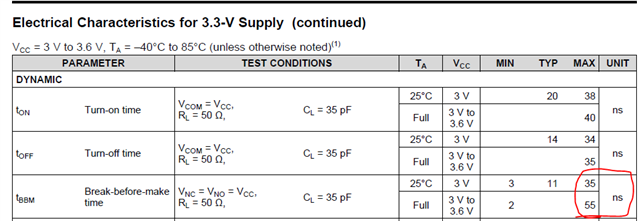
Q1: tBBM is measured from COM 90% falling to 90% rising? They measured 562ns > DS spec 35ns
IN=high, NO1 to COM1

Additional information, with MUX, the output COM signal seems meet one of transceiver spec Tw minimum 25ns(measured 31ns). but we still don't know why communication failed.
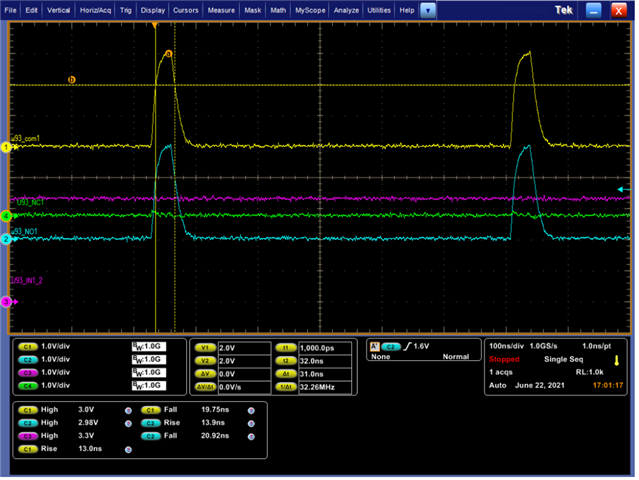
Transceiver spec:



Regards,
Allan



